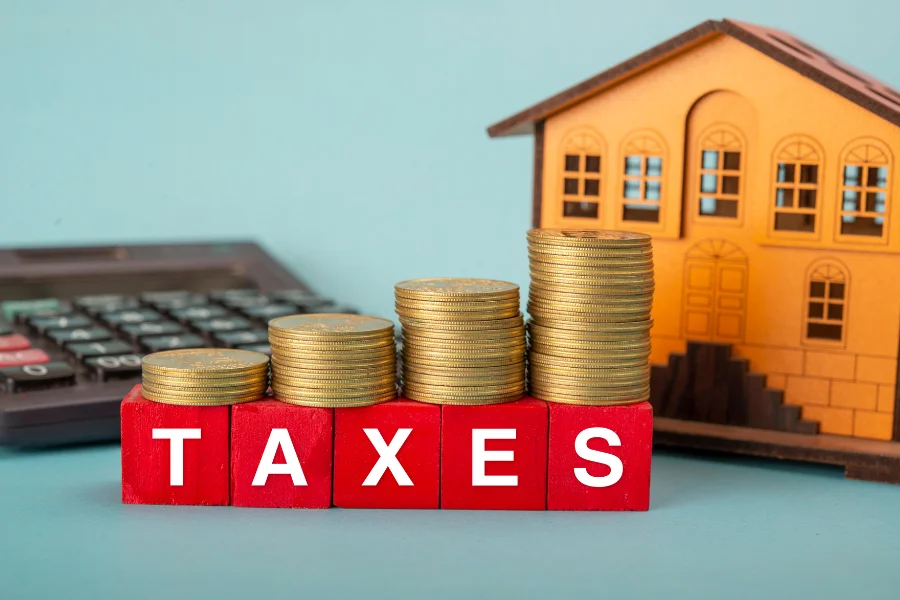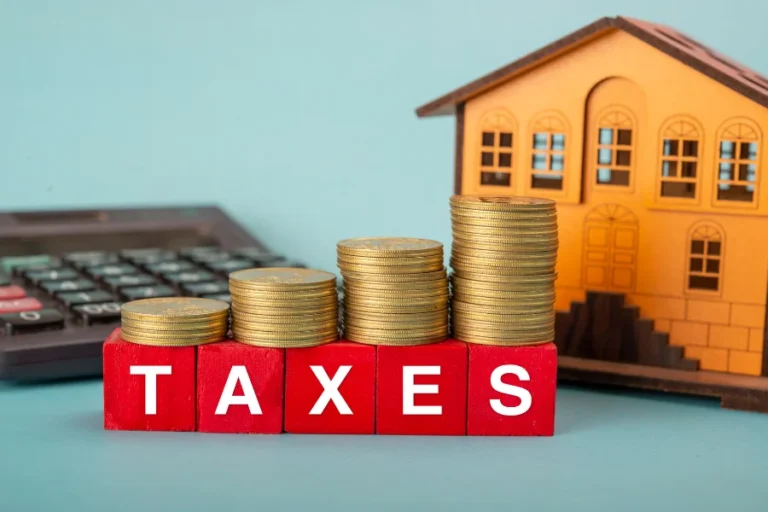Real Property Tax in the Philippines [Calculate Easily in 2025]
It isn’t just a dream for many Filipinos to own a house. It’s a cherished dream. A house is a place where they can feel safe and it marks an important milestone in their lives. The Local Government Code of 1991 (Republic Act No. 7160) requires each homeowner to pay realty property tax each year. Here’s a simple breakdown to help you handle this responsibility.
Understanding Real Property Tax
The real estate tax in the Philippines is an annual financial obligation that property owners must pay to their local government.
The local government must fund public services through this tax, commonly referred to as RPT.
Fair market value is determined by your property’s price on the open market, which reflects the amount you’re required to pay.
It is important to understand the assessment levels set out in the Local Government Code, which vary according to whether your property is residential, agricultural, or commercial.
Based on your RPT, the assessed value is a percentage of fair market value.

Who is responsible for paying?
Real estate property tax is mandatory in the Philippines, regardless of whether the property is used for residential or commercial purposes.
- Churches and cemeteries are examples of properties used exclusively for charitable, educational, or religious purposes.
- Organizing cooperatives
- Properties owned by the government, such as those used by water districts or for generating or transmitting electricity.
- The term “environmental equipment” refers to machinery and equipment used to control pollution or protect the environment.
What is covered by it?
Real estate taxes cover more than just land. They also cover buildings, improvements, and machinery.
Paying when
There are two payment options available to you:
- Payment in full is due by January 31 of each year.
- The quarterly installment deadlines are as follows:
- March 31st: 1st quarter
- 30th June: 2nd quarter
- September 30th: Third quarter
- December 31st: end of fourth quarter
The penalty for a missed payment is 2% per month, up to a maximum of 72%. In extreme cases, unpaid property taxes can lead to your property being auctioned off. To make things better, if you pay early, you might get discounts of up to 20%, so look for local announcements.
How to pay
In your city or municipality, you should make RPT payments to the Treasurer’s Office.
The amount to pay
A property’s assessed value is multiplied by its RPT rate to determine the property’s tax.
- Metropolitan Manila has a RPT rate of 2%, and provinces have a rate of 1%.
- A property’s assessment value is calculated by multiplying its fair market value by the local government’s assessment level.
Specifications for RPT rates
It is crucial to understand the specific RPT rate applicable to your property, since provinces in the Philippines levy a 1% tax, whereas cities and municipalities within Metro Manila levy a 2% tax.
You must use these percentages when calculating your annual property tax payments.
The following information will help you understand:
- You can determine the assessed value of a property by looking at the amount of the fair market value divided by the type of property you have and the purpose for which it is being used.
- The correct tax rate is 1% for provincial properties and 2% for Metro Manila properties. This is the rate at which your assessed value will be taxed.
- Don’t forget to include the additional 1% levy for the Special Education Fund.
The amount of your Real Estate Tax is calculated by multiplying your assessed value by your tax rate. Then, you add 1% for the Special Education Fund levy.
Make sure you stay on top of these calculations to make sure you meet local government unit obligations.
Calculating the value of a property
In order to calculate your real property tax, you must assess your property’s value.
This figure is derived from the fair market value of the property and the actual use of the property as determined by its assessment level.
Property assessments are typically 20 percent for residential properties and 40 percent for agricultural properties.
In order to determine your real property tax rate, you multiply your assessed value by the state’s Real Property Tax Rate.
Make sure the assessed values reflect the current fair market value of your property by checking the most recent tax declaration.
You’re also required to pay an additional 1% to the Special Education Fund, on top of the basic tax.
By supporting local schools’ budgets, this extra levy contributes to the growth of the community.
In addition to maintaining the value and integrity of your property, paying your real property tax accurately demonstrates your commitment to supporting your community’s educational infrastructure.
Stay up-to-date on your tax obligations by consulting the most recent guidelines.
How to Calculate Your Tax Due
The local tax rate can then be applied to the assessed value of your property to determine the amount of real property tax due.
The formula for this process is straightforward: Real Estate Rate x Assessed Value.
You’ll need to do the following:
- Consult your local assessor’s office if you aren’t sure what your property’s current assessed value is.
- In Metro Manila, the real estate rate is 2%, while outside Metro Manila it’s 1%. This rate is determined by your local government unit (LGU).
- Use the formula by multiplying the Real Estate Rate by the Assessed Value of your property to calculate your tax.
The tax due would be PHP 20,000 for a property valued at PHP 1,000,000 in Metro Manila, based on 0.02 (Real Estate Rate) x 1,000,000 (Assessed Value).
Late payments may incur penalties, so it is important to pay on time to qualify for discounts.
Here is a sample calculation
For example, if you own a residential lot valued at P1 million with an assessment of 20%, your assessed value would be P200,000. If your RPT is 2%, you would pay P4,000 in basic real estate property taxes.
| Property Details | Sample Calculation |
| The fair market value | P1,000,000 |
| Level of assessment | 20% |
| FMV x Assessment Level = Assessed Value | P200,000 |
| Rate of RPT (Metro Manila) | 2% |
| (Assessed Value x RPT Rate) is the basic RPT | P4,000 |
A local government may also add a 1% annual tax for a Special Education Fund (SEF), or an additional 5% tax if the property is idle or undeveloped.
Punishments and deadlines
There are two ways to pay your real property tax:
- By January 31st, a lump sum should be paid
- Payments are made quarterly.
Defaulting on these deadlines can lead to 2% monthly interest, which can reach an astounding 72%.
If you fail to pay your taxes, the government will auction off your property. So, it’s crucial that you understand these penalty rates.
Dates for payments
Real estate tax payments in the Philippines must be made by January 31st or by quarterly installments due by the end of each quarter in order to avoid steep penalties.
It is crucial to stay on top of your payment due dates:
- You may qualify for a discount from your local government if you make the full payment by January 31st.
- Payment deadlines for quarterly installments are on the last day of each quarter.
- If you miss any of these dates, you will be charged 2% interest a month, which can add up to 72% in the long run, so you must keep a strict calendar.
Paying late: Consequences
In the event that you fail to pay your Real Property Tax by the due date, you’ll face a 2% interest rate per month, which can accumulate to a staggering 72% if the debt remains unpaid.
Unpaid amounts can significantly increase above the value of the property as a result of late payments.
Consider paying early. If you pay by January 31st, you might be eligible for a discount granted by the local government.
When paying in installments, you must make sure you pay in full before the last day of each quarter. Failure to do so can result in hefty penalties as well as your property being auctioned off.
Prevent unnecessary financial stress by keeping these deadlines in mind.
Detail of Penalty Rates
The following information will help you avoid unnecessary fines and penalties for real property tax payments:
- The Real Estate Property Tax payment deadline is January 31st to avoid penalties. If you take advantage of this deadline, you may qualify for a discount on your tax.
- Payments in installments must be made by the quarterly deadlines: March 31, June 30, September 30, and December 31.
- If you fail to pay your city or municipal treasurers on time, you could owe them as much as 72% in penalty charges.
Relief from taxes and exemptions
The Philippines offers real property tax exemptions for certain types of properties, including government-owned land, religious institutions, and environmental protection equipment.
If you qualify for one of these exemptions or relief measures, you could be able to reduce your taxes based on the assessed value of your property significantly.
For a clearer picture, take a look at this table summing up potential exemptions:
| Criteria for eligibility | The type of property | Status of tax exemption |
| Governed | Land | Exempt* |
| A religious view | Buildings | Exempt |
| Dedicated to charity | The facilities | Exceptional |
| Educational | The institutions | Exceptional |
| The environment | Mechanics | Exceptional |
*Exempt from consideration unless beneficial use is granted.
It is important to remember that your Philippine Real Estate Property Tax is calculated by multiplying the Real Estate Rate by the Assessed Value. However, your property will not be taxed if it is exempt.
To take advantage of these tax exemptions and reliefs, you must provide the necessary proof of eligibility and follow the law’s requirements.
Simplifying the payment process
Following a few simple steps will make paying your real estate tax in the Philippines straightforward and hassle-free.
For your convenience, here’s a breakdown of the payment process:
Take the necessary steps to prepare the necessary documents
Don’t forget to bring valid identification and the latest tax declaration if you’re paying for the first time. Include receipts from the real estate developer and past years’ tax declarations if you’re paying for the first time.
You can visit the municipal treasurer’s office
Find out where your property is located by visiting the local municipal treasurer’s office.
You will be assisted in verifying your documents and calculating any taxes due, including the basic Real Property Tax and the Special Education Fund charge.
Choose a payment method
Depending on your circumstance, you may be able to pay in full early or make installment payments.
Whenever you make a payment, be sure to ask for a receipt to confirm and record your payment.
Delinquency and appeals management
In the event that you have missed a property tax payment, you are not out of options. You can still settle your debt with interest to avoid further penalties.
Appeals can be filed backed by solid evidence if you find your tax assessment incorrect or too high.
Getting out of tax delinquency
It is important for property owners to understand payment deadlines and explore various options like installment plans and early payment discounts in order to effectively manage tax delinquency.
You need to be proactive when it comes to the Real Property Tax in the Philippines.
You can do this by following these steps:
- Pay your Real Property Tax by the due date and take advantage of early payment incentives to reduce your bill.
- Taxes should be paid according to the assessment values shown on your tax declaration, and all official receipts should be kept as proof of payment.
- Prevent unexpected shortfalls in the Education Fund and other local tax components by allocating funds.
Managing assessment disputes
It’s crucial to understand your rights and the proper channels for appealing your real estate tax appraisal when dealing with an assessment dispute in the Philippines.
You can challenge government assessments if you believe they don’t reflect your property’s true value.
The following is a snapshot of how you might feel:
| Feelings | The reason |
| The frustration | Assessed values that are inflated |
| Feeling anxious | A potential strain on finances |
| Optimism | You have the opportunity to correct your tax declarations |
| The determination | For the purpose of ensuring a fair property tax system |
Appealing a tax assessment
The first step towards navigating the complexities of real property tax appeals in the Philippines is to file a written request for reconsideration with the local assessor’s office.
Property owners may feel that their real estate property tax assessment does not accurately reflect their property’s value. To address this, they can appeal their assessment to their local government.
The steps are as follows:
- The assessed values may be challenged in writing by submitting a request for reconsideration.
- Documents that can support your claim of overvaluation should be gathered and prepared.
- Make sure you attend the appeal hearing and present your case effectively.
Keeping your property’s value protected
A responsible homeowner pays real estate property taxes. Insurance coverage is another way to protect your property.
A comprehensive insurance policy from Cocogen that provides protection for your home, garage, fence, and detached structures against a variety of unforeseen events. The plan provides coverage against:
- A fire and lightning show
- An earthquake
- The typhoon
- The flood
- Strikes, riots, and malicious damage
- Widespread water damage
- Robbery and Burglary
As part of the package, Kasambahay Coverage is included, which covers medical expenses and personal belongings of household workers.





